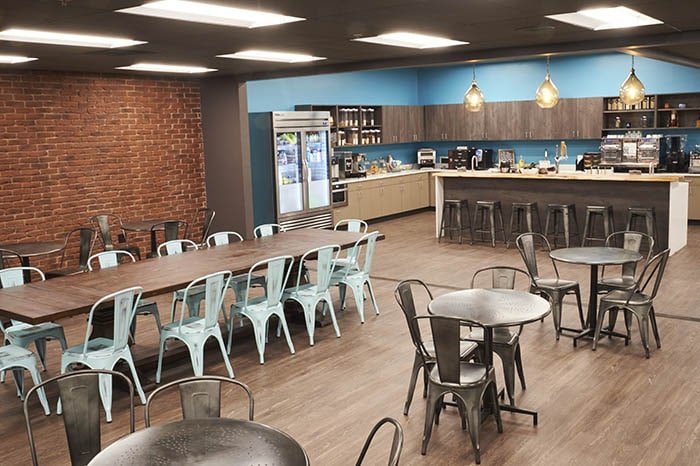
30 Sep Workspace Design for Mobile Employees
Workspace Design for Mobile Employees
By 2020, estimates show the mobile workforce will be 105.4 million strong. That translates to roughly 72.3 percent of the workforce in the U.S. Globally, that number is set to reach 1.87 billion by 2020, or 42.5 percent of the worldwide workforce.
In 2017, the mobile workforce made up 38.8% of the global workforce. Employers should recognize this trend and prepare to manage an increasingly mobile talent force by providing the right technology.
Here are a few ideas to help you design your workplace and culture to accommodate the increasing number of mobile employees.
1. Ensure Effective Control
The biggest challenge for managers is to know where the mobile employee is, what they are doing, and reach out to them, at any given time.
A GPS enabled remote tracking system, with timestamps, offers visibility into the location of mobile employees, and track their movements, in real time. Such insights offer scope for analytics, to manage performance proactively, and to pinpoint areas of inefficiency and trouble spots.
2. Provide Tech Tools
The mobile workforce of today uses technology extensively. Mobile apps, collaboration suites, and other resources make it very easy to work efficiently from the road.
While 98 percent of enterprises affirmed that their employees use personal smartphones for business purposes, only 20 percent of enterprises provide them with those smartphones. Unfortunately, this leaves the company vulnerable to security risks.
When offices have more employees working from home — or even from other countries — it’s been important to use VoIP phones, which make phone calls through the internet rather than regular landlines, to help employees around the world appear as though they’re calling from the office.
3. Create Welcoming Work Environments
Designate a centralized location for remote employees who may come into the office from time-to-time.
Design mobile-ready spaces to accommodate them. Make it easy for your West Coast sales director to find a place to work in your Manhattan office when she’s there for meetings, or having conference rooms outfitted with technology to make video calls easy and glitch-free.
Trade private offices for private areas. The need for private offices is decreasing, while private rooms for individual meetings are essential to the new workplace environment. To keep communication strong between employees, create a private room for meetings with remote workers.
Hot Desking – The office infrastructure is transforming to include more collaborative workplaces and unassigned seating in order to better serve employees who float in and out of the office.
According to Quartz at Work, “While some people tend to work more productively in a traditional desk-and-chair layout, others feel better when they’re working from a sofa or bean-bag chair. That’s why offices are creating a new mixture of furniture zones that offer both laid-back and traditional seating options. This could range from collaborative tables for those who want to work in a more relaxed manner and socialize with co-workers, to soundproofed spaces or office pods for those who prefer to work alone or in silence.”
Need more ideas? Speak with one of our Office Space Advisors!
Call us at 800.427.5811 Email: info@rigroup-us.com
Sources:
- https://serraview.com/8-workplace-statistics-will-make-rethink-space-planning/
- https://medium.com/swlh/managing-your-mobile-workforce-in-2019-fbd1a309388e
- https://blog.jive.com/4-strategies-current-mobile-workforce-trends/
- http://www.carsondesign.com/2017/12/designing-your-office-space-for-the-mobile-workforce/
- https://qz.com/work/1613575/how-office-design-is-changing-in-the-era-of-remote-work/



















